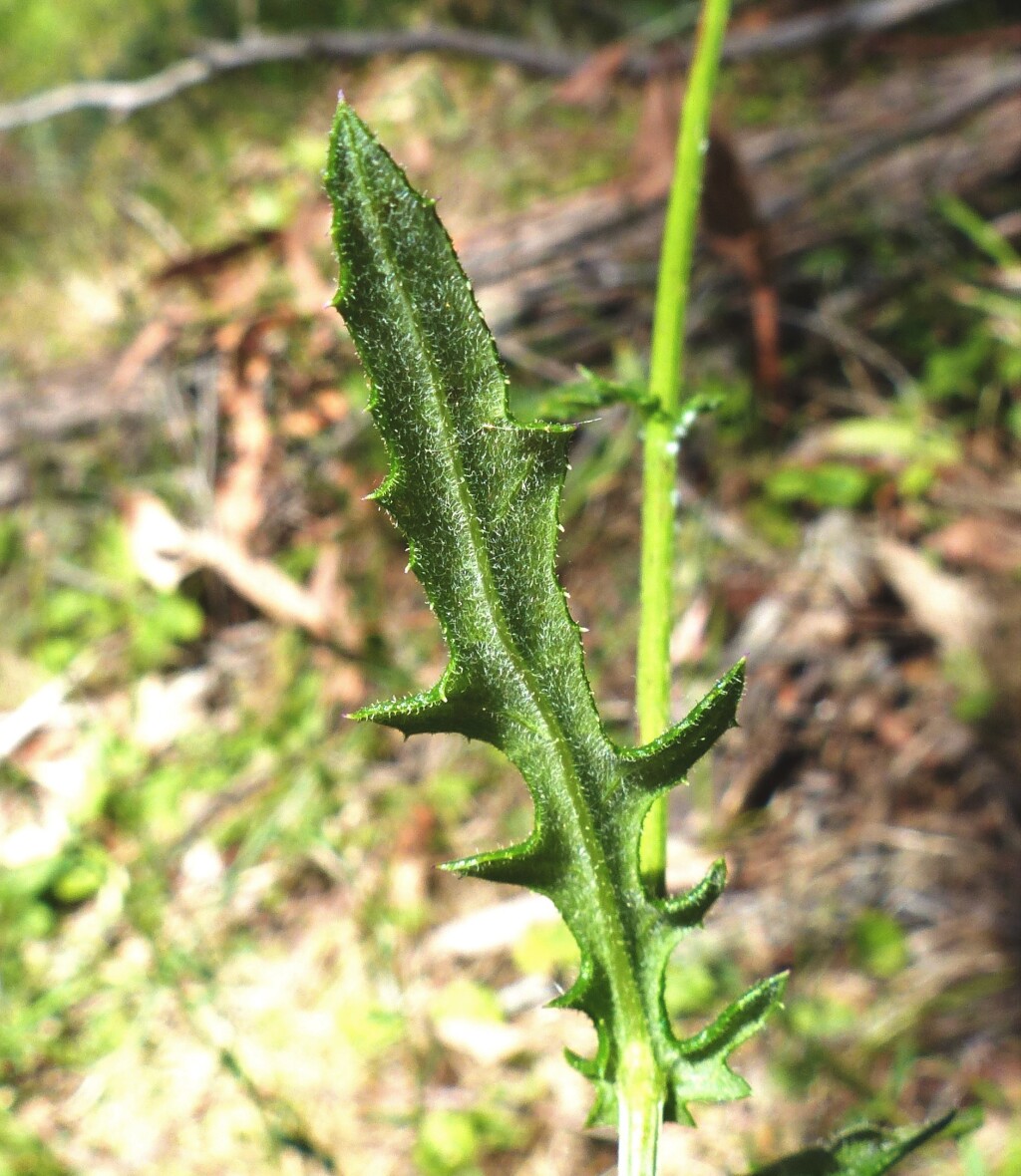Senecio hispidulus
A.Rich. Rough FireweedVariable, erect annual or short-lived perennial herb, c. 40–100 cm high; stems glabrescent to moderately cobwebbed-pubescent. Leaves sessile, auriculate, lanceolate to obovate, dentate to jagged-lobate or pinnatisect, 4–14 cm long, 5–35 mm wide (rarely more); upper surface sparsely to densely hispid with tubercle-based septate hairs; lower surface usually cobwebbed, also with some erect septate hairs, rarely glabrescent. Inflorescence corymbose, usually c. 5–20 cm across, comprising c. 50–300 capitula; capitula non-radiate; involucre cylindric, 5–7.5 mm long, glabrous, ciliate or somewhat whitish-cobwebbed near base; bracts (10–)11–13; bracteoles present; florets c. 20–35, bisexual and unisexual. Cypselas cylindric, 1.5–2.5 mm long, red-brown, papillose-hairy in rows, or nearly all over, rarely glabrescent; pappus of slender hairs 5–6 mm long, deciduous. Flowers mostly Sep.–Dec.
LoM, Wim, GleP, VVP, VRiv, GipP, OtP, WaP, Gold, CVU, GGr, DunT, NIS, EGL, EGU, WPro, HSF, HNF, OtR, Strz, MonT, HFE, VAlp. Also WA, SA, Qld, NSW, ACT, Vic, Tas. Naturalized New Zealand. Except for the north-west, common and widespread throughout much of the State, particularly following soil disturbance or fire.
Senecio hispidulus var. dissectus (Benth.) Belcher is now treated as a distinct species, see Senecio bathurstianus.
Walsh, N.G. (1999). Senecio. In: Walsh, N.G.; Entwisle, T.J., Flora of Victoria Vol. 4, Cornaceae to Asteraceae, pp. 941–965. Inkata Press, Melbourne.
 Spinning
Spinning




